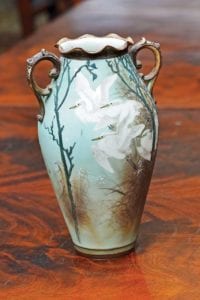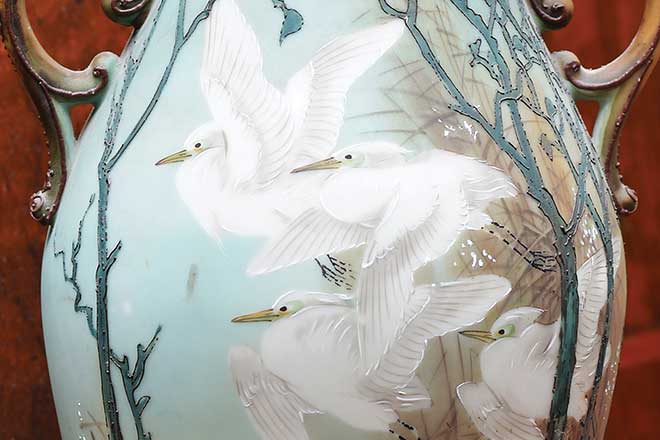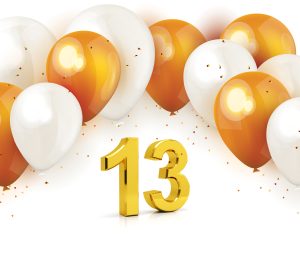the treasure » One of a pair of identical vases
the story » A Clayton homeowner says, “These vases were displayed in my parents’ dining room cabinet for years. I always loved them and was thrilled when my dad gave them to me 20 years ago. They belonged to my grandfather and date back to at least 1940. I have no idea where they came from, but as kids, we always pretended they were precious heirlooms.”

what the professionals say » The vase in question appears to have both Asian and Western influences. It is part of a pair. The underside is unmarked, and the porcelain doesn’t appear to have significant age, so it’s likely it was produced in the early 20th century. The enamel decoration, scrolled handles and scalloped rim recall the more elaborate European styles, while the painted scene of flying cranes is a characteristic Asian subject. In the late 19th century, Japanese potters were imitating the work of Limoges, Belleek and R.S. Prussia and producing porcelain vases, teapots and other objects elaborately painted as export wares for the United States market and marked Nippon (1891-1921) or Japan (after 1921) to comply with the McKinley Tariff Act of 1890.
value » While this does not bear the typical import stamp, we can identify it as likely a Nippon porcelain piece because of its age and aesthetic. An unmarked pair such as these, with the more rare animal imagery, though showing some losses along the rim of one, could command several hundred dollars in the retail market.
This month’s expert: Decorative Art Specialist and Asian Works of Art Specialist at Leslie Hindman Auctioneers
Have a treasure in your attic you’d like evaluated? Contact tellus@townandstyle.com so we can connect you with an appraiser and feature your item in Town&Style!
Photos: Bill Barrett








